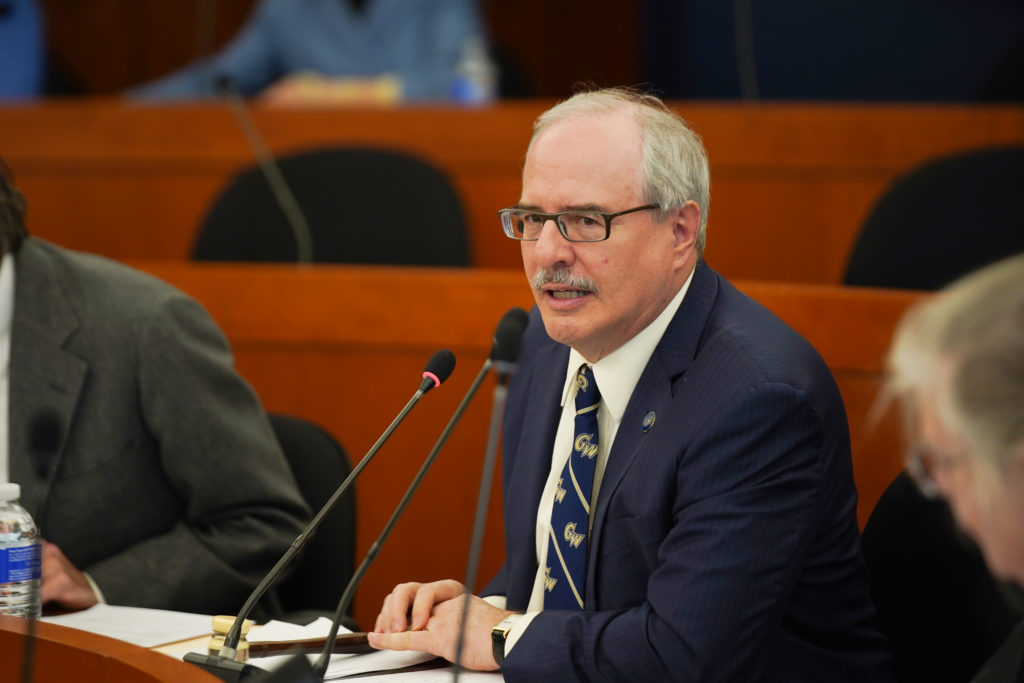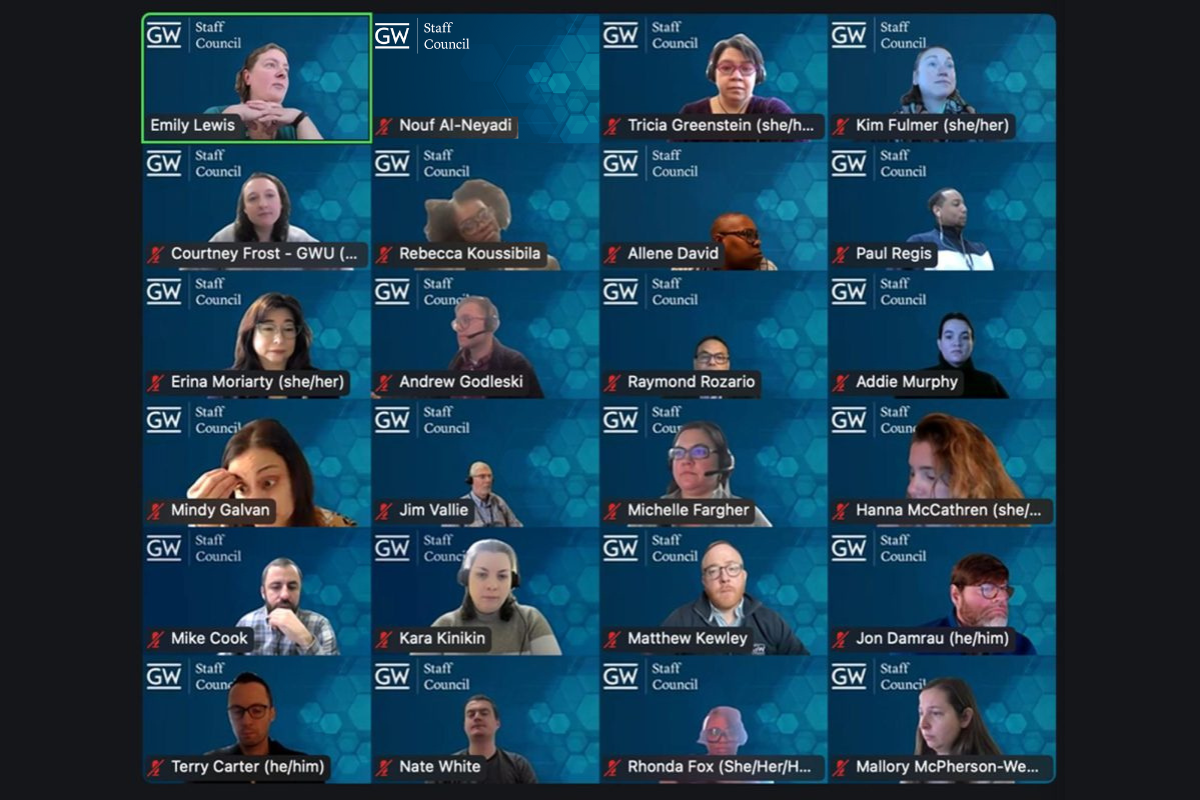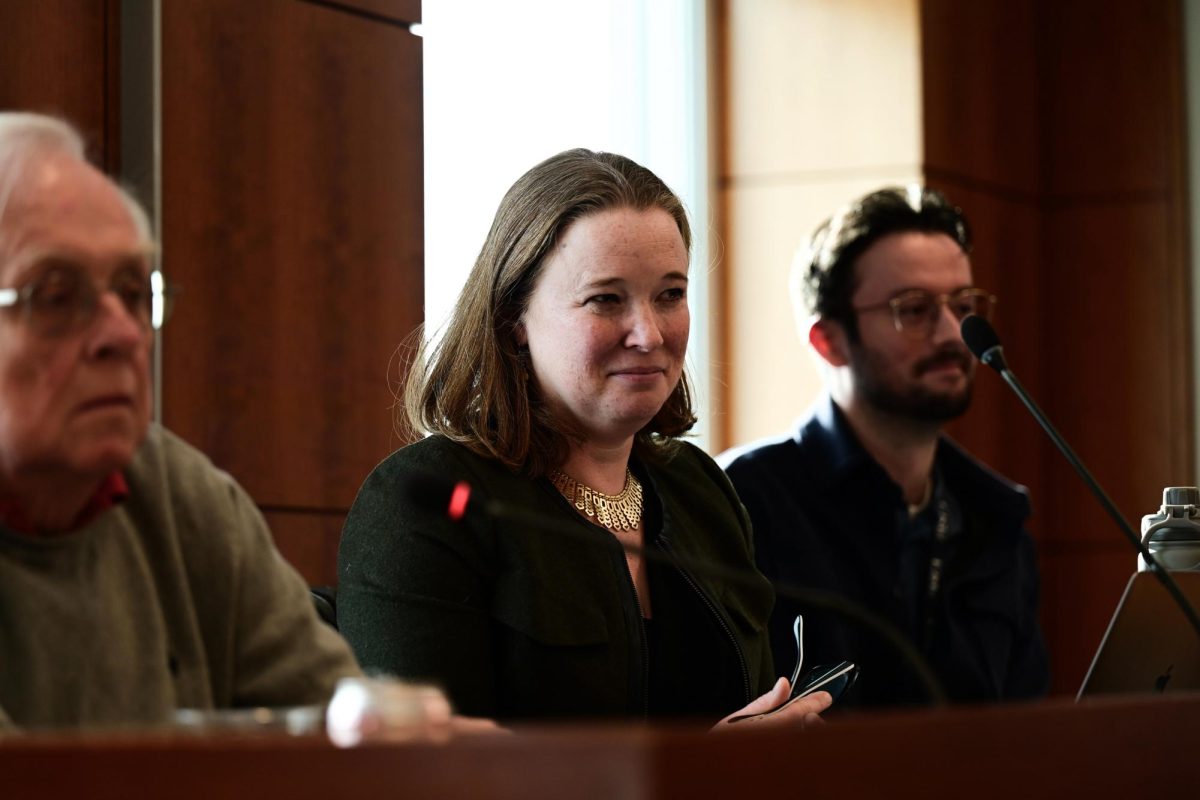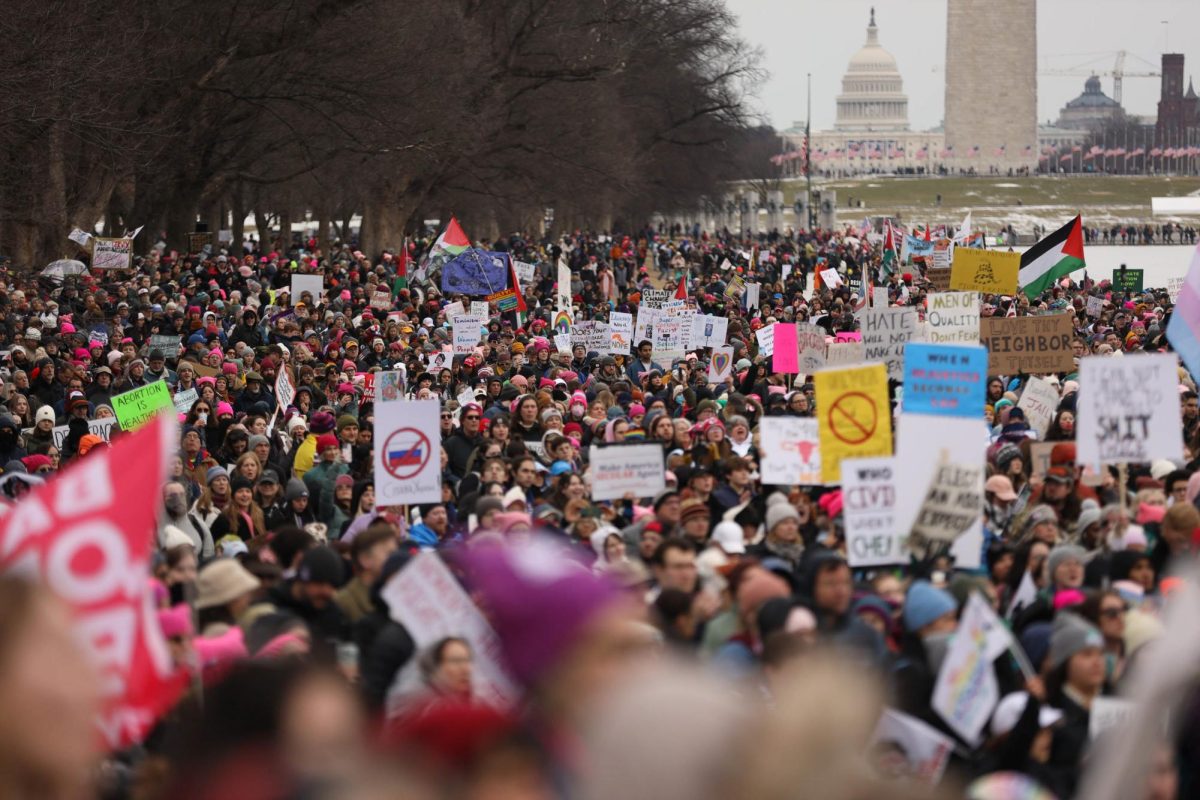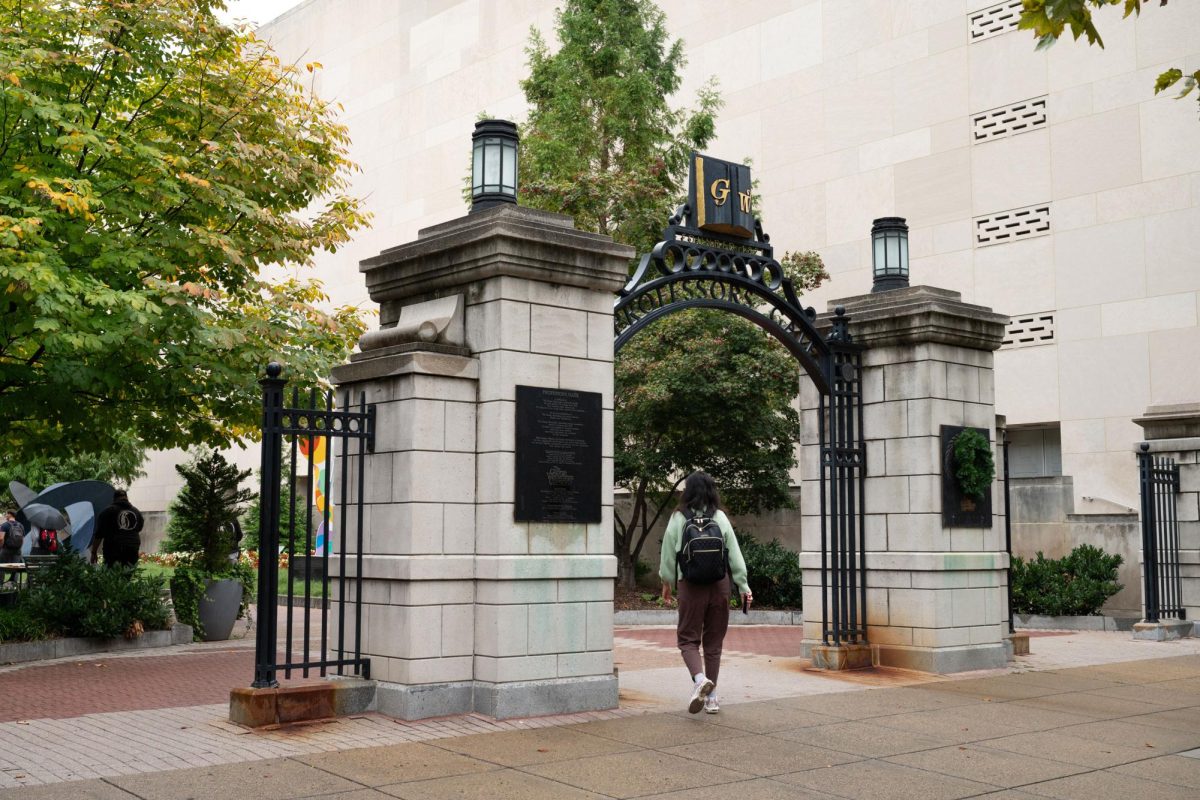University President Thomas LeBlanc said officials must be able to provide sufficient testing, contact tracing and places to quarantine for students to return in the fall.
LeBlanc unveiled three fall scenarios to the Faculty Senate Friday for the next academic year: on-campus instruction and residential housing, a hybrid of on-campus and online coursework or a continuation of the instructional continuity period, which would cause expected revenue shortfalls of $100 million, $200 million and $300 million, respectively. Officials will announce a final decision by June 15 but might extend the decision date one week, LeBlanc said.
The revenue losses could encompass up to nearly 30 percent of GW’s annual operating budget, which has hovered slightly above $1 billion for the past few years.
“I can’t tell you today what the safest mechanism is because it will depend on the condition,” he said. “But our current plan is to try to be open and to have it try to have a residential experience in the fall. If facts change between now and then, that conclusion may change.”
Officials have said they are planning to resume in-person classes this fall. The pandemic is expected to cause revenues to fall by $45 million by the end of the fiscal year.
LeBlanc said the three projections for the fall include key assumptions like the student retention rate and graduate enrollment, which could shift as a result of the pandemic. Officials will refine the modeling as they examine relevant data trends as the outbreak continues, he said.

Sidney Lee | Graphics Editor
LeBlanc said making a final decision in June will provide students, families and faculty enough time to prepare for the fall semester. The scenarios capture the “range of possibilities” for the next academic year and may need to be tweaked in the coming weeks, he said.
“It will depend on what happens next,” LeBlanc said. “As I said, in terms of both financial planning and contingency planning, we’re planning primarily around [in-person classes], with all the evidence today suggesting it will be possible to reopen with appropriate testing, tracing and quarantine. But that could change.”
He said officials are working with GW’s medical experts to determine testing plans, but administrators may need to test students and employees when they initially return to campus, weekly during the first month of the academic year and bi-weekly thereafter. GW would need to administer about 250,000 coronavirus tests under that plan, he said.
LeBlanc said if students can return in the fall, an “optimistic” scenario, some students – including vulnerable populations, like those with certain respiratory illnesses, and international students – may be unable to return to campus or participate in classroom instruction. Provost Brian Blake is leading an effort with the deans to explore “alternative academic options” for those students, like online classes or assignments that can be done while social distancing, LeBlanc said.
Blake said last month he wants to guarantee refunds on international students’ enrollment deposits if they can’t return in the fall because of the pandemic.
He said the full on-campus instruction projection considers about an annual 5 percent decline in enrollment and a 10 percent reduction in revenues from residence halls and other campus operations. He said the hybrid scenario includes an annual enrollment reduction between 15 and 25 percent with 50 percent of campus operations, while the online scenario assumes an annual enrollment reduction of 30 percent and a complete loss of revenue from campus activities.
Administrators paused the process for GW’s next strategic plan in April and will reassess intentions to reduce the undergraduate population by nearly 20 percent as a result of the pandemic.
Blake said officials have formed new committees – enrollment planning, academic planning, student residential life, public health and research – to spearhead the University’s coronavirus response. The groups have met with students periodically and released three or four surveys to faculty and staff to garner feedback, he said.
“I think now even with these groups forming, there’s an opportunity for us to revisit to make sure everyone feels that shared governance is being fulfilled,” Blake said.


